Spirits and Love under the Mango Trees: Dutch-Congolese Heritage at a Cemetery in Brazzaville


Klaas van Walraven is a historian and political scientist working on the history of colonialism and decolonisation in French Equatorial Africa.
Klaas van Walraven learnt of the existence of a burial ground for Dutchmen in Brazzaville, dating from the late 1880s. Congo-Brazzaville was never a Dutch possession. So why does it boast a Dutch cemetery? And who are the young men lying there?
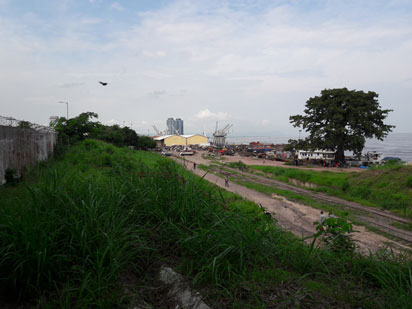
In December I was in Brazzaville, capital of the Republic of Congo (the former ‘French Congo’), for a conference on biographical studies in African history. This was my second visit to the city (the first was in 2015, when my wife and I crossed the mighty Congo River from Kinshasa in the DRC). An oil-producing country, Congo’s capital is a magnet of activity, with Chinese companies constructing one modern high-rise after another. But I was more interested in older things. Before this trip I had learnt of the existence, totally unexpected, of a ‘cimetière des Hollandais’ – a burial ground for Dutchmen in Brazzaville, though I had no idea of its location. Together with Joseph Zidi, historian at the Université Marien Ngouabi and former visiting fellow at the ASCL, I went to visit the Dutch consul, Mrs Fumey van Baggum, whose office is located on the Boulevard Sassou N’Guesso, not far from the Mpila district on the eastern outskirts of Brazzaville.
 This is, in fact, where the cemetery is located, in a secluded, almost secret spot. You have to know the location if you want to find it; most Brazzavillois are unaware of its existence – as I was, when we came ashore here in 2015: the cemetery is in an area popularly known as ‘Beach’, the capital’s river port and the point where one can cross over to Kinshasa. Cranes, warehouses and depots mark the horizon, people move in and out of the port area, seemingly unencumbered by the personnel of the local customs post. All manner of vessels float in the river – a derelict railway track follows the shore south. The port is just south of Malebo Pool (‘Stanley Pool’ in colonial times), the point where the Congo widens to form a huge inland lake, 35 by 23 km, with the island of Mbomou in the centre. At the port the river narrows down to its normal size but is still 2 km wide – one can make out Kinshasa on the horizon.
This is, in fact, where the cemetery is located, in a secluded, almost secret spot. You have to know the location if you want to find it; most Brazzavillois are unaware of its existence – as I was, when we came ashore here in 2015: the cemetery is in an area popularly known as ‘Beach’, the capital’s river port and the point where one can cross over to Kinshasa. Cranes, warehouses and depots mark the horizon, people move in and out of the port area, seemingly unencumbered by the personnel of the local customs post. All manner of vessels float in the river – a derelict railway track follows the shore south. The port is just south of Malebo Pool (‘Stanley Pool’ in colonial times), the point where the Congo widens to form a huge inland lake, 35 by 23 km, with the island of Mbomou in the centre. At the port the river narrows down to its normal size but is still 2 km wide – one can make out Kinshasa on the horizon.
 Giant mango trees
Giant mango trees
With the help of a consul employee we entered the port and walked along the railway track. After some 50 meters a new stairway proved the only sign of something located on the elevated embankment to our right. We climbed the stairs and amidst trees and bushes stumbled upon an old stone enclosure, with bars in shapely rounded form. This constitutes the graveyard’s perimeter. It cannot be seen from the river, as it lies too high, while an older entrance on the land side has fallen in disuse with access blocked by storage tanks of the area’s industrial park. With the entrance on the riverside locked, we climbed the stone railing and to our amazement found ourselves in a beautiful rectangular green, some 35 m in length, a bit less in width. Ten giant mango trees provide the area with shade and add to its serene atmosphere. A young man was sitting at what seemed to be a stele in the centre. The consul, an enthusiast about conservation of this exceptional place, had helped to erect it in an effort to mark the site, with the Netherlands coat-in-arms, Je maintiendrai, painted on the stone (another stele marks the old entrance on the land side). The consul and a few Dutch residents had taken care of the cemetery for years, trying to stem its degradation by pushing back stones crumbling from the tombs and seeking a solution for the poor drainage. The most recent restoration effort appears to date from 2004, but since there is no effective barrier to protect the burial ground, bits of stone get stolen, and there is no plaque anymore with information on the deceased. Young couples use the secluded spot for love-making.
We walked between the tombs, startled by over-ripe mangos coming down with a sudden thud, narrowly missing our heads, and we studied the graves for information about the people laid to rest in these peaceful grounds. The tombs are made of bricks plastered over with white-washed cement. They are 17 in total. Earlier on the graves bore the names of the dead, but the material has perished or been removed (pieces of letters have been set into the central stele to preserve what is left of it). Thus, while on some tombs, illegible words (names?) have been scribbled in chalk, the graves are all unmarked.
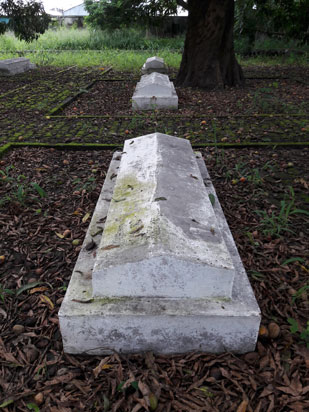 Historical background
Historical background
So who were buried here and why does Congo-Brazzaville, never a Dutch possession, boast a Dutch cemetery? According to the consul, the cemetery dates from the late 1880s – the first grave, according to a list which the Netherlands embassy in Kinshasa compiled, dates from 1893 (of one H.L. Luning, born 1862 and arrived in Brazzaville 1884). The last grave is from 1920 (of one W. Gokkel, born 1892, who came to Brazzaville in 1916). All these men (16 Dutch, one French) were agents of the ‘Nieuwe Afrikaansche Handels-Vennootschap’ (NAHV), a Dutch trading company from Rotterdam that in 1880 succeeded the ‘Afrikaansche Handels Vereeniging’ (AHV), which had gone under the previous year as a result of accountancy fraud (a huge scandal at the time). The AHV had been established in 1869, but the first traders had arrived at the mouth of the Congo in 1857. By 1870 the company had 50 to 60 European agents in its employ. Dutch traders were among the earliest arrivals of whites in this part of Africa, and their activities must be set in the context of so-called ‘legitimate trade’ – nineteenth-century commerce in raw materials, notably palm oil, ivory and (later) wild rubber, in exchange for European manufactures including textiles, weapons, spirits. This was the age of ‘informal empire’, in which white traders frequented Africa’s coastal areas, submitted to the authority of pre-colonial rulers and depended on African middlemen for the purchase of natural resources. This commerce was more balanced as far as the relations between Africans and Europeans were concerned but, from the perspective of European traders, also less profitable. They could not mobilise colonial authorities to squeeze out intermediaries – the ‘Scramble for Africa’, the continent’s wholesale occupation by European powers, was still decades away.
On steamer and by canoe
Thus, in 1878 two AHV men, A. Jung and A. de Bloeme (the latter would become a representative of the Netherlands at the infamous Berlin Conference of 1884-1885, which would set rules for Africa’s partition) travelled on a steamer by the name of ‘Zaire’ to Noqui (now part of Angola), and then on by canoe to Vivi, still several hundred km to the south-west of what would become Brazzaville. Stanley was yet to have a steamer carried in parts beyond the cataracts in the Congo River to Malebo Pool, from where he would penetrate deeper into the interior at the behest of King Leopold II – Europe’s ultimate predator. Around the same time Savorgnan de Brazza signed a treaty with the Tio kingdom that provided the French with a foothold at Mfa, the later Brazzaville – Leopold’s agents became established on the other side of the river at ‘Kinshassa’, renamed Leopoldville. As the terminus of the Congo’s navigable sections, both places represented a strategic point of entry into the Equatorial region.
Trading posts
Meanwhile, NAHV traders were busy expanding the company’s activities, establishing trading posts (‘factories’) along the Congo and tributaries and buying up produce (at that time notably ivory). The company was successful, dominating much of the Congo trade (in 1889 total European exports from the region amounted to an estimated 8 m guilders, of which more than 6 m worth of goods was destined for the Netherlands). But the NAHV was to clash head-on with the protectionism and coercion inherent in Europe’s modern imperialism. Faced with the looming bankruptcy of his Congo Free State, established on the river’s left bank, Leopold took every step to exploit the colony’s wealth, tax economic activities and drive out other European traders with protectionist measures. This violated the provisions of the Berlin Conference’s General Act but the NAHV had no power to stop it: the age of informal empire had come to an end and in due course, the company would become the victim of the Netherlands’ earlier refusal to establish political control in the region (the Dutch government had sought not to antagonise the British, worried as it was over possible British encroachment upon its prized East Indian possessions).
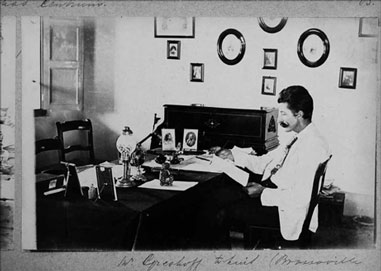 Leopold’s caprices
Leopold’s caprices
But the NAHV’s principal local agent, the Protestant and anti-Belgian Anton Greshoff (photo left), did not readily submit to Leopold’s caprices. He had been working in Africa since 1875, established good relations with the Teke people on the Congo’s right embankment (the ‘French side’), as well as with the local Bacongo community, which referred to him as Foumou N’Tangou, the Sun King. He had been engaged in exploration of the Congo River basin since 1883, visited the Kasai and was the first European agent to reach Stanley Falls, in the far north-east of the Free State (1885-1886), to trade in ivory and arms. This led to growing difficulties with Leopold’s men. At first the NAHV refused to sail its steamers under the Free State flag – a compromise was found later but the company (which had a factory at Leopoldville, the old ‘Kinshassa’, since 1886) would progressively move its activities to the French side of the river, benefiting from the fact that France’s colonisation efforts were marred by a lack of resources. Thus, there was an NAHV presence in Brazzaville as of 1888, and in 1891 the company moved its headquarters there from Leopoldville (its presence at Banana on the Atlantic was moved to Portuguese Cabinda).
The company would return to the Congo’s left bank when Leopold’s possessions were taken over by Belgium (1908). Ten years earlier it had already confronted growing French protectionism by establishing French subsidiaries that took part in the rapacious concessionary exploitation of the colonies under French control (two companies were liquidated around World War I, one was sold off when the NAHV merged into the Dutch Lindeteves-Jacoberg firm in 1954, which still exists as a technical trading company in Singapore). The company’s African activities continued until 1982, when the remainder was sold off, in the course of the so-called OGEM debacle, to a Pakistani concern.
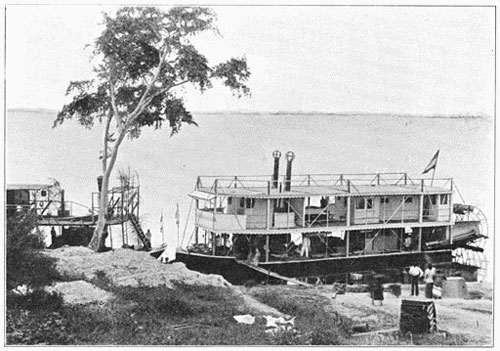 Dutch souls of Brazzaville
Dutch souls of Brazzaville
If all this belongs to a bygone era, in Brazzaville one can still find relics of this trading past, material and immaterial. In fact, the part of the Congo River on which the graveyard was created is still known as ‘Pointe Hollandaise’, while there is an ‘Avenue de la Pointe Hollandaise’ leading to it – few Brazzavillois know the reason behind these names. The whole area in which the river port and its industrial activities are located – and not just the cemetery – was part of the so-called ‘concession hollandaise’, 33 ha of land on which the NAHV established itself and which it had formally registered as its property in 1907. The concession boasted its own shipyard, where until the 1920s-1930s the NAHV maintained its steamships; these also provided important transport services to the under-resourced colonial government.
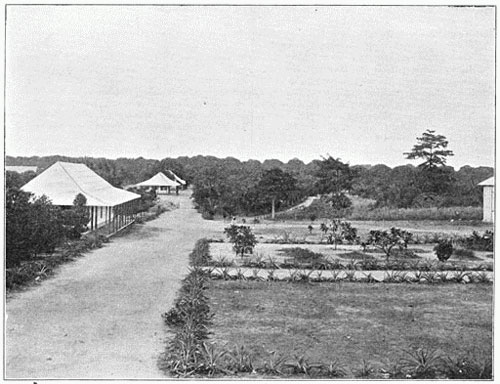 The burial ground should thus be seen as part of a larger Dutch presence in early colonial Brazzaville, aptly described by the French sociologist Georges Balandier in Sociologie des Brazzaville noires (1955; which includes information on the NAHV presence). As the consul told me, every year members of the Dutch community (no doubt most in NAHV employ) commemorated those laid to rest under the mango trees. On All Souls’ Day they would meet in the serene shade of the cemetery for a minute of silence, followed by a social gathering marked by reminiscences and a beer or two.
The burial ground should thus be seen as part of a larger Dutch presence in early colonial Brazzaville, aptly described by the French sociologist Georges Balandier in Sociologie des Brazzaville noires (1955; which includes information on the NAHV presence). As the consul told me, every year members of the Dutch community (no doubt most in NAHV employ) commemorated those laid to rest under the mango trees. On All Souls’ Day they would meet in the serene shade of the cemetery for a minute of silence, followed by a social gathering marked by reminiscences and a beer or two.
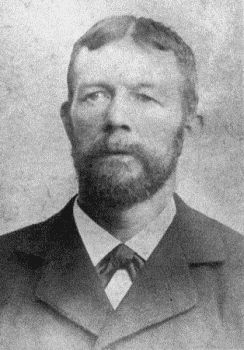 NAHV archives
NAHV archives
As yet, the deceased provide us with little more than their names and the years of their birth and death, as well as of their first arrival in Brazzaville. The document of the Dutch embassy in Kinshasa lists all of them – P. Noordhoff, one Arie Terwolde, a Chr. Berendsen and one H.A. Shaw (presumably a Dutch national, as only in one case, C.J. Vionnet, it is mentioned that this concerned a Frenchman). One grave is of L.Th. Kentgens (of whom a photograph could be retrieved from the internet, see photo left). Who were these men? At which factories had they worked? One would have to search documentary sources to get to know more about them. In this respect it should be noted that the National Archives in The Hague are the custodians of the NAHV’s records (see the sources for this blog). So far, Africanists and students of African history have paid little attention to this collection of documents, although they hold a wealth of data, possibly also on the era of informal empire and the contradictory nature of the African-European encounter at the onset of colonial rule so beautifully rendered in Johannes Fabian’s Out of Our Minds: they merit a PhD project!
The men of the NAHV
In any case, the years of death of these NAHV men provide an indication of the circumstances that marked their lives and work. Nine of the 17 died in their twenties, while five passed away in their thirties. Only three men reached an age of 40 or older (H.A. Shaw a record 64). The youngest, C.K.V. Adam, did not live to reach the age of 21 – he died a day before his anniversary. The list of the Dutch embassy does not make clear whether ‘first arrival’ in Brazzaville meant that some had been there before, but in several cases their stay in the colonial capital was cut short by their death. C.K.V. Adam died within three months of his arrival, as did J.C. v.d. Sluys. Mr. Shaw knew Brazzaville for a record 18 years, but most others’ stay was limited to a couple of years or even months. No doubt many had been stationed elsewhere before, at any of the company’s remote outposts. Mr. Kentgens died within a month of his arrival in Brazzaville; had he first been stationed at another factory and come to the city to recuperate from illness? As is well known, the epidemiological circumstances in which Europeans found themselves were tough. Quinine gave some protection against malaria, but especially in Equatorial Africa the prevalence of other diseases (sleeping sickness, dysentery, smallpox) could help explain the overall low age at which most of the NAHV men passed away. G.A. de Haan died on 4 December 1918, aged 29. Could he have been a casualty of the influenza pandemic then raging in the city?
The quiet of the ancestors
The ‘concession hollandaise’ was sold in 1923 to Belgian firm Interfina/Comfina. This created a problem with regard to the NAHV cemetery. If no more people were interred at the burial ground on the river after October 1920, who would take care of the tombs already there? Moreover, in 1925 the concession was handed over to the authorities of the colonial federation ‘Afrique Equatoriale Française’ (AEF), which wanted to transform the area into a river port cum railway terminus. It was agreed, however, that the graveyard would not be touched (it would become a ‘public space’), while the Belgian firm was prepared to take up the necessary maintenance – which it did until the 1950s. It was only then that the colonial government began to transform the former NAHV concession in earnest, and the burial ground risked becoming a casualty of the colony’s infrastructural modernisation. Hence, the Netherlands’ consul at the time intervened with the authorities pleading that the cemetery – a material vestige of Dutch activities in the past – be preserved and left intact. In response, AEF’s federal parliamentary body, the ‘Grand Conseil’, in 1951 resolved to declare the burial ground a historical monument. Portraying the men who lie, in aeternum, on the banks of the Congo as the ‘pioneers of Brazzaville’, it also asked the colonial government to hand the graveyard over to the Netherlands. This the French did not do but they did declare the cemetery a historical monument, and the tombs received some urgent repairs funded by the Dutch government and the NAHV. On 1 December 1952 the cemetery was reopened in the presence of the consul and the French authorities; after 1955 there were yearly ceremonies in which a wreath was laid in memory of the deceased.
 The vicissitudes of a cemetery
The vicissitudes of a cemetery
But the tropics are hard on the living as well as the dead, and by 1967 the burial ground was in need of repair. The NAHV (presumably its successor company) was again prepared to furnish some funds, while a Dutch foundation (‘Stichting Cultuurgeschiedenis van de Nederlanders Overzee’ – CNO) also concerned itself with its preservation. By 1973 the tombs had been restored and the Dutch consul in Brazzaville personally paid for a commemorative plaque with the names of the deceased. Yet, by the 1980s the resting place was again reported to be in a state of neglect, with several of the graves overgrown with grass and difficult to find. Neither the Dutch government nor CNO or companies such as Shell and THV International (which succeeded part of NAHV) were willing to contribute to its upkeep.
Fortunately, other companies were ready to make donations for the preservation of this irenic place (Damen and Unilever, but also Bolloré, according to the present consul), and since the restoration work of 2004-2005 things look better. Yet, one must regret the disappearance of all signs of the identity of these Dutchmen. This is perhaps typical of the histories of burial grounds, but is it not a first step in the gradual fading of the ancestors?; and will this not lead to the disappearance of knowledge about an exceptional African-Dutch historical encounter? Who is prepared to come forward and take action? The Dutch embassy in Kinshasa is willing to contribute to the cemetery’s renovation, but on condition that the authorities in Brazzaville see to its maintenance. The Dutch consul contemplates the possibility of covering the tombs with Perspex to counter the unrelenting erosion by the tropical climate. She has asked the authorities to appoint a warden-guide to watch over the quiet of the dead and has discussed the erection of a more effective fence to protect the tombs against vandalism. For now, however, Congolese lovers can still find their way to the grounds along the majestic river, to spend their moments of intimacy under the rustling of the mango trees – and of the spirits of Dutch traders long forgotten.
Photo credits
Upper coloured photos: K. van Walraven; Joseph Zidi.
Photo Anton Greshoff at his desk in Brazzaville: © Rijksmuseum voor Volkenkunde (https://www.dbnl.org/tekst/_nie012200801_01/_nie012200801_01_0014.php).
Photo NAHV concession Brazzaville: www.engelfriet.net
Photo NAHV steamer Wilhelmina (location unknown): www.engelfriet.net
Photo L.Th. Kentgens: www.engelfriet.net
Lower coloured photo: www.engelfriet.net
Sources
Primary:
- Conversation with Mrs H.A.M. Fumey van Baggum, honorary consul of the Netherlands, Brazzaville, 6 December 2019.
- Steenhard Sluyter, H., De Nederlandse begraafplaats te Brazzaville; DDI/ON (internal communication Netherlands Ministry of Foreign Affairs), 30 March 2000.
- Polderman to Netherlands Embassy Kinshasa, Registratie van overblijfselen uit de Hollandse tijd, Netherlands Ministry of Foreign Affairs, DAZ-140735/217, 8 August 1967.
- Equateur, 11 May 1951.
- 2.18.10.09: ‘Inventaris van het archief van de Nieuwe Afrikaansche Handels-Vennootschap (NAHV), (1854) 1880-1959 (1981)’, Netherlands National Archives, The Hague.
- www.engelfriet.net, accessed 13 December 2019.
Secondary:
- Balandier, G. (1955), Sociologie des Brazzaville noires (Paris).
- Coquery-Vidrovitch, C. (1972), Le Congo au Temps des Grandes Compagnies Concessionnaires, 1898–1930 (Paris).
- Fabian, J. (2000), Out of Our Minds: Reason and Madness in the Exploration of Central Africa (Berkeley, Los Angeles and London).
- A. Kloos, ‘Langs den Congo tot Brazzaville’, De Aarde en Haar Volken, 1906 (accessed from www.engelfriet.net, 13 December 2019).
- Obdeijn, H. (1983), ‘The New Africa Trading Company and the Struggle for Import Duties in the Congo Free State, 1886-1894’, African Economic History, no. 12, 195-212.
- Van Boven, H. (i.e. Henri – a former NAHV agent who travelled to the Congo and became the biographer of Louis Couperus) (1904), Tropenwee (Amsterdam).
- Van der Laan, L. (1983), ‘Trading in the Congo: The NAHV from 1918 to 1955’, African Economic History, no. 12, 241-259.
- Westerbeke, J., ‘La Nana – Een factorij en haar dynamiek’; MA essay, Leiden University, 30 December 2017.
This post has been written for the ASCL Africanist Blog. Would you like to stay updated on new blog posts? Subscribe here! Would you like to comment? Please do! The ASCL reserves the right to edit, shorten or reject submitted comments.


Comments
Add new comment
Very informative and interesting! Very good work Klaas, congratulations! Once more it is shown that Dutch-African relations cover a larger period of time and more regions than is traditionally known. I fully agree, the commercial, economic (investments), military, diplomatic and religious/missionary activities of the Dutch are not yet sufficiently known and merit more research! Best wishes, Fred VDK
Hello Mr. van Walraven,
I was researching a gold medal to Anton Greshoff just now and found your article "Spirits and Love under the Mango Trees: Dutch-Congolese Heritage at a Cemetery in Brazzaville." I found it excellent, so interesting and also very nice to see his photograph, the man behind the medal, as we say. I was however not sure if you meant to say that he was buried in the cemetery in Brazzaville. Thank you for your efforts.
Sincerely, Frank Draskovic
President, California Orders & Medals Society
Dear Mr Draskovic,
It is only today that your comment of last year was brought to my attention. With regard to your question, no he is not buried there. I do not know where his grave is, I presume somewhere in the Netherlands. Yours sincerely, Klaas van Walraven
Thanks for sharing your research this vividly! At the runup of another round of maintenance works projected this year, I wonder whether your article has ever been translated into French. This would help to communicate this part of collective heritage with our Congolese friends.
Dear Mr van den Nieuwenhof,
I am afraid not. Perhaps someone in Congo could do so? I would be interested in knowing what the plans are regarding the maintenance work.
Very interesting piece on the AHV and NAHV. I lived in Kinshasa in the late 1980’s and bought a number of ceramic jars stamped with “AHV” on the side. I always wondered whether they are old or new pieces; I am not expert in ceramics. But your history of this trading company was very interesting to read.